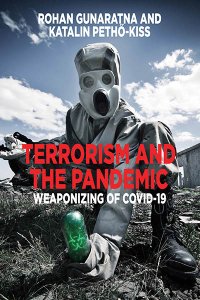By Theo Clement and Hans-Jakob Schindler
The nexus between terrorist and transnational organized crime (TOC) networks in West Africa presents one of the most significant security challenges. Both networks undermine governance and the rule of law and cooperate on a multitude of levels in a complex web of mutual beneficial arrangements. Therefore, this nexus presents a mutually enforcing mechanism that supports and accelerates regional destabilization. This paper argues that the risks emanating from this cooperation are not limited to terrorism financing alone as terrorist groups also use their cooperation with TOC networks to gain access to resources needed for their activities, such as arms and ammunition. Finally, such cooperation also allows terrorist groups to carve out spaces that allow them to control the local population while at the same time provide security for local licit and illicit economic activities. Therefore, this cooperation is in some cases also a tool through which terrorist groups can gain support and acceptance among the local population. Therefore…
-
, tackling this nexus must involve both the regaining of territorial control from terrorist groups by the respective governments as well as the strengthening of governance structures. Both aims should also be attempted concurrently. This paper presents a range of recommendations for German and European decision-makers that primarily aim to disrupt the entry as well as exit points of the flows of illicit goods of the region. Given the current challenges European and German projects face when cooperating with some of the governments in the region, an emphasis on increasing regional cooperation in West Africa seems advisable. In particular, the paper suggests strengthening national and regional law enforcement and border control capabilities, especially within the coastal states of the Gulf of Guinea. Increased cooperation with the Intergovernmental Action Group Against Money Laundering in West Africa (GIABA), increased support to strengthen the management and control mechanisms for national parks, and intensified exchange mechanisms, such as the West Africa Police Chief Committee (WAPCC) of Economic Community of West African States (ECOWAS), could be contemplated. In addition, German and European decision-makers could encourage and support governments in the region in their efforts to intensify the use of existing regional mechanisms such as the ECOWAS sanctions mechanism, as well as increase the participation of regional states in the United Nations Office on Drugs and Crime (UNODC)-World Customs Organization (WCO) Container Control Program and INTERPOL’s West African Police Information System (WAPIS) as possible priorities.
Berlin: Konrad-Adenauer-Stiftung e.V. Counter Extremism Program 2023. 16p





















